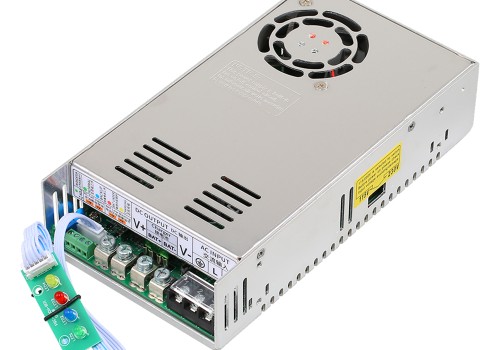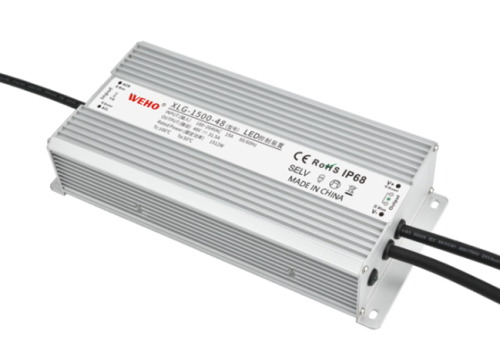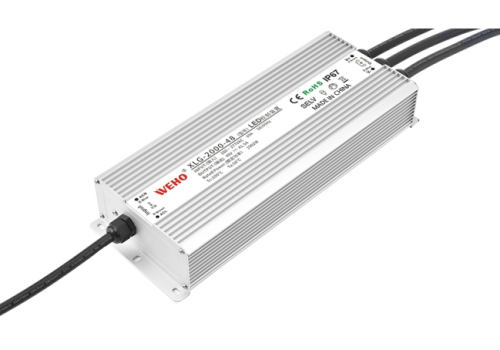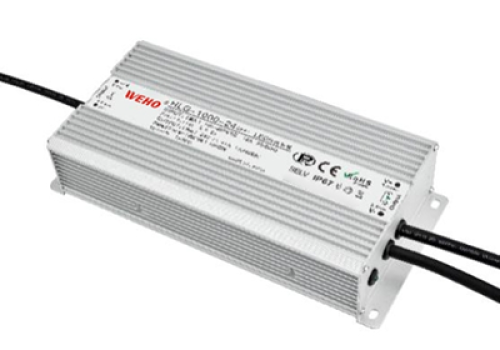Switching power supplies have revolutionized how we manage power in modern electronics. Whether you’re designing a compact IoT device or a high-end industrial laser system, the type of power supply you choose plays a critical role in system performance. One of the most important distinctions is between high power and low power switching power supplies.
In this article, we explore the technical and practical differences between these two categories—and what makes high voltage switching power supply design especially challenging.
High Power vs Low Power Switching Power Supplies: 7 Key Difference
| Aspect | High Power Switching Power Supply | Low Power Switching Power Supply |
|---|---|---|
| Power output range | Typically above 500W, often reaching several kilowatts | Usually under 100W, suitable for compact or portable devices |
| Topology selection | Commonly uses full-bridge, half-bridge, or LLC converters | Often uses flyback or forward converters |
| Thermal design | Requires active cooling such as fans or liquid systems | Relies on natural convection and compact heat dissipation |
| Size and weight | Larger and heavier, requires consideration of installation space | Small and lightweight, easy to integrate into tight spaces |
| Application scenarios | Industrial equipment, EV systems, medical imaging, laser systems | Mobile chargers, LED drivers, embedded controllers, smart meters |
| Cost and complexity | Higher cost with complex control systems, often digital-based | Lower cost with simpler analog-based control |
| Safety and isolation | Requires high voltage isolation, EMI shielding, and fault protection | Basic safety standards, often non-isolated in low-voltage cases |
| Efficiency requirements | Typically above 90 percent, optimized for full load and standby | Usually around 80 percent, focuses on light-load performance |
Output Power Range
The most obvious difference lies in the output capacity.
High power switching power supplies typically deliver output power exceeding 500 watts and can go up to several kilowatts or more. They are commonly used in demanding industrial and medical applications where large voltage and current are required.
Low power switching power supplies, on the other hand, are usually rated below 100 watts. These are widely used in mobile chargers, consumer electronics, embedded devices, and LED drivers.
Voltage Levels and Applications
High power SMPS often operate at higher voltages, and many are classified as high voltage SMPS. These supplies generate hundreds or thousands of volts for applications like:
-
X-ray equipment
-
Plasma generators
-
Electrostatic systems
-
RF transmitters
Because of the voltage involved, a high voltage switch mode power supply must meet strict design and insulation requirements. In contrast, low power supplies often deal with low-voltage DC (5V, 12V, or 24V), suitable for microcontrollers, sensors, and everyday devices.
Topology and Circuit Complexity
Low power SMPS usually rely on simpler topologies like Flyback or Forward converters, which are cost-effective and compact.
High power supplies typically use more sophisticated topologies such as Half-Bridge, Full-Bridge, or LLC resonant converters. These topologies support higher efficiency and better thermal performance but require more advanced control and component selection.
The design of a high voltage switching power supply also demands careful management of electromagnetic interference (EMI) and precise control over switching transitions.
Thermal Management
Thermal control is a crucial differentiator:
High power designs generate more heat and usually require active cooling methods such as forced-air fans or even liquid cooling in extreme cases. Heat sinks, airflow design, and thermal shutdown protection are essential.
Low power switching supplies often rely on passive cooling, as heat generation is limited and easier to manage in confined spaces.
Physical Size and Integration
High power SMPS are typically larger and heavier due to robust transformers, bigger capacitors, and extensive heat dissipation systems. They are usually installed in racks, cabinets, or industrial enclosures.
Low power units prioritize miniaturization. Many are integrated into PCB designs or molded into wall adapters.
Safety and Isolation
High power and high voltage switch mode power supply systems must comply with strict international safety standards such as IEC 61010, UL 62368, and others. They require reinforced insulation, longer creepage distances, and rigorous testing (like high-pot tests) to avoid hazards like arcing or electric shock.
Low power designs may still require isolation, but their safety requirements are generally less stringent due to lower energy levels.
Cost and Design Time
High power supplies have a higher bill of materials (BOM), more complex control circuitry, and longer development cycles. They may also require custom magnetic components and thermal simulations.
Low power SMPS are faster to develop, lower in cost, and often available as off-the-shelf modules or IC reference designs.
Conclusion
Choosing between a high power and low power switching power supply is more than just selecting a wattage. It involves understanding the system’s voltage requirements, thermal behavior, safety expectations, and design constraints.
For applications that demand high voltage and reliability—such as medical devices, scientific equipment, and industrial systems—a high voltage switching power supply or high voltage SMPS is often the only viable choice. Meanwhile, consumer and embedded designs benefit from the simplicity and affordability of low power options.
Understanding these differences is key to optimizing both performance and cost in your power supply design.










